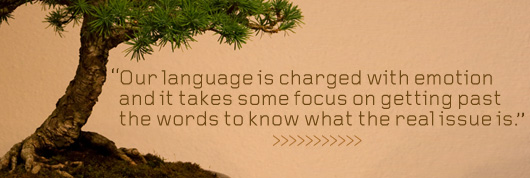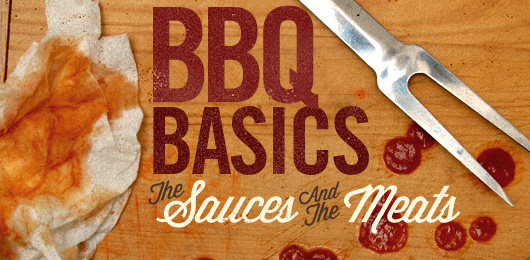 |
Photo By Ortizmj12 |
Grappling with an overreaching boss, addressing a jealous girlfriend, haggling with a car salesman, or dealing with a punk-ass at a bar, guys are instructed to just “man up.” But to handle the situation like a man AND get what you want you must learn the well-calculated craft of confrontation.
By Justin Thompson
I struggled with how to present this topic of how to converse and confront with dignity, recalling immediately how many times I hadn’t employed any forethought or goal before just laying into somebody that I disagreed with. Making a bad situation worse, I came away feeling overly guilty, somewhat crazy and ashamed because I knew I had more dignity and class than to just throw that drink in that person’s face. I’m kidding – that last bit never happened. Or I should say hasn’t happened yet…
Regardless, in life, we are going to come across people in our personal and professional lives with whom we disagree. At times the disagreements are trivial and petty; other times they are completely life-altering depending on how you enter into the dialogue with the person you aren’t seeing eye to eye with.
I was trying to think of a metaphor for the art of confrontation. My best laid effort was thinking of a bonsai tree and how caretakers of these delicate, fragile plants must be precise, have a plan, provide nourishment and exert patience. Please note you’ve never seen a machete-wielding green-thumb next to a bonsai. There’s a reason. When you enter into an altercation, sometimes you can look like that crazy with the emotional machete.
Does it make a difference whether the conflict is personal or professional? No. They’re probably both important to you and you have to enter into them the same way, there are just different things at stake and different consequences to your choices. Unfortunately, guys, we get a bad rap for being completely devoid of emotion and our tendencies to walk away and think until we’re ready to talk are perceived as ‘shutting down.’
Let’s walk through some steps to help you in your next argument:
1. Be Precise
What is the argument about? Are you and your girlfriend arguing about dishes or something that alters the fabric of your relationship? Is your boss upset with you over your lack of organization or because you think he or she is a micromanager? Either way, be precise about what the nature of the problem is.
For the most part, we get our feelings hurt when someone else is mad at us and we immediately have emotional reactions, blocking any logical or intellectual comprehension of the real issue. Our language is charged with emotion and it takes some focus on getting past the words to know what the real issue is. You’re going to have to be precise in understanding the problem and being precise in how you’re going to respond or react to the problem that is raised.
2. Have a Plan
When you enter into a conversation that may begin to escalate into an altercation, you can diffuse the situation by asking questions like, “When did you start feeling this way?,” and reiterate the issue to make sure you are hearing it clearly. Offer a plan of how to compromise or what kinds of things that you both can do to make the situation better.
For instance, if your boss seems disappointed in your organizational skills – perhaps ask for guidance or advice as to how he or she stays on top of things and be willing to come to the table with an idea of your own as to how to accomplish a greater work environment for both of you. Ultimately, you must think of things in terms of “win/win.” If you see an altercation as you having to lose ground and the other person winning ground, you’re doomed.
Unhealthy patterns will repeat ad nauseam until you get fired, quit or whip out your emotional machete in the workplace, leading to either of the prior exits. In relationships, many times this lack of a plan leads to deposits and withdrawal from the emotional bank account: you do this for her now, she can let you do that later. That is an art of compromise, but be open about it. Knowingly commit to your compromise and expect that as part of it, she must be willing to compromise in the future as well.
3. Provide Nourishment
Some altercations begin out of mere stupidity on our part as human beings. Not saying “hello,” smiling or waving goodbye can be the first step down a nasty path that can lead to uncomfortable situations, especially in a work environment. While it is work, and you don’t necessarily go there to make friends, you do spend most of your waking hours of life at work, so you might as well make the best of the situation. By just coming to work with a positive attitude, or being able to find humor with the people you work with or relating to them in some way beyond just work conversation, you can avert a lot of unnecessary tension, drama and confrontations.
By all means, don’t spill your whole life story, nor fabricate a life that isn’t yours. Just be willing to see these people as people, just like you, working for a living and trying to do the best they can in the situations they are in. Chances are, despite how your structure is setup, you’re still all on the same team together. Remembering birthdays, enjoying celebratory lunches or quarterly pitch-ins can really boost morale and relieve not only your tension, but everyone else’s. And if you take the initiative to organize things like this, you become the office favorite.
4. Exert Patience
One of the best tactics to have when someone comes to you or you go to them with a problem or issue that needs to be resolved is to be patient. Again, this goes back to our knee-jerk emotional reactions we have as humans, but we need to be able to take a step back, assess our situation (#1), plan our strategy to resolve the issue with positive ideas (#2) and be patient when the issue can’t be resolved right away.
Sometimes because we want something resolved doesn’t mean that the other person is ready to talk right away or that it’s the most convenient time to have the conversation to resolve the issue. I hate to say it, but you may even have to grin and bear the awkwardness for a few days or so until there’s been time for everyone to think and come back with a clear and open mind, ready to tackle the problem at hand. As they say, Rome wasn’t built in a day. And one man didn’t build it alone. So hang in there if you’re having a rough spell with either a loved one or someone from work – if you commit to resolving the issue in a positive, ‘win/win’ manner, you will be better off down the road.
I can hear you asking me, “But Justin, what if I’m just so mad I want to punch somebody?” Well, then you get to be the one in #4 who walks away and takes some time to breathe. It’s not wrong to want to collect your thoughts, but you also need to be cognizant that it’s an open issue (if not wound) for someone else to and they may want and need it fixed sooner than you would like.
Even if the bonsai green-thumb goes to grooming the bonsai tree with his precise cuts, they may not always be the ones he wants to make. Mistakes and miscommunication can always happen. But just like with the bonsai, from there you have to recalculate your plan to make the next step correctly, even if it means completely changing your plan from before. What if you make a simple mistake at work with exponential consequences? You have to step to the plate and take responsibility and reformulate your plan as to how to fix it and be willing to admit your mistake and own it. (The same goes for a relationship, too.)
Obviously, learning how to appropriately converse with people when you have issues you conflict on is no science. That’s why they call it an art. It’s not defined, it’s not objective, it’s not tangible. What I’ve given you are merely guidelines to this so-called ‘art,’ but it’s completely up to you with how you handle conflict in your life. Will you become a bonsai master or will you become a machete monster?















